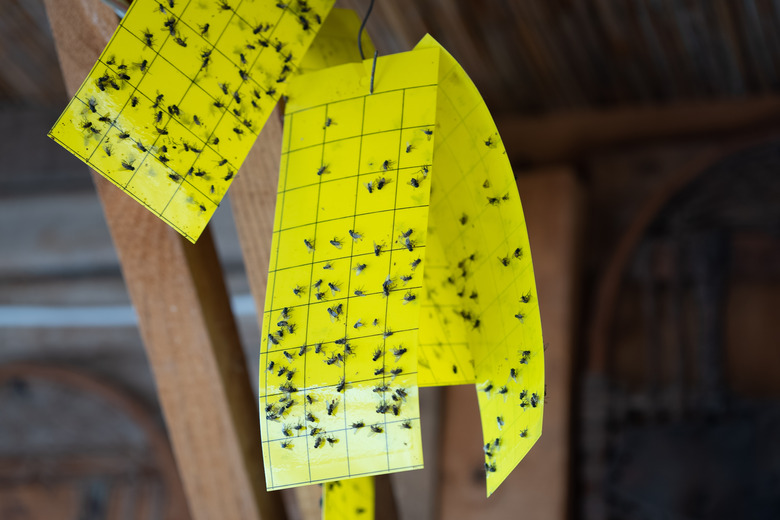How To Make Your Own Insect Glue Traps
We may receive a commission on purchases made from links.
Just about every garden center or big-box retailer has commercial insect glue traps available for sale, but you don't need to shell out cash for these sticky traps. In fact, making your own sticky bug trap is surprisingly quick, easy, inexpensive, and eco-friendly. These traps are best used for small flying pests, such as gnats, thrips, and whiteflies. Traps typically can't eliminate an infestation, but they are a useful tool to monitor pests before a problem develops or to monitor the effectiveness of your extermination attempts during an active infestation.
Find a Yellow Object
Find a Yellow Object
Commercially available sticky traps are usually yellow because most of the insects these traps are designed to catch are attracted to yellow. The exception is thrips, which prefer blue, which is why some traps are sold in blue instead of yellow. When you're making these traps at home, do what the pros do and make your trap yellow unless you're specifically targeting thrips, and in that case, choose blue.
As for the type of object, the only real requirement is that it is something nonabsorbent enough that the sticky substance won't simply soak into the trap, rendering it useless. It's typically best to stick with relatively flat objects as well because this makes it easier to apply the sticky substance, and there's less risk of the sticky product sliding off the surface. You can use just about any object, but some of the most popular choices are index cards and paper plates. Other items that may work include Tupperware lids, Frisbees, flip-flops, phone cases, and so on — basically, anything flat and nonabsorbent in the right hue.
Choose a Sticky Substance
Choose a Sticky Substance
Like your application surface, the sticky material you use to catch the bugs can be largely based on what you have lying around the house. For a true "glue" trap, you could grab some nondrying glue like the kind used to manufacture commercial sticky traps, but you don't need to buy a special kind of glue to make sticky traps because they can be made with all types of sticky nonglue products as well. All you need is something that is too sticky for insects to fly away or walk away from after they land in it. Vaseline is a particularly popular material for making these traps. Honey is also effective, although aside from your targeted pest, it can also lure in other insects that are attracted by sweet substances.
Create and Place the Trap
Create and Place the Trap
Use a butter knife to evenly spread your sticky substance to the yellow or blue base material. You can then place the glue trap in or around your plants to catch insects. Try placing the traps on the ground near the stem and hanging them from bamboo poles near the canopy of the plants to catch bugs that fly straight into the foliage. If you have a greenhouse, place traps near the doors and vents to stop bugs before they gain entry.
Toss the Dead Bugs
Toss the Dead Bugs
Depending on the material you used, you may want to simply throw away the traps once they are full, but the great thing about making your own sticky traps is that you can also reuse them. To reuse a trap, simply clean off the sticky substance along with the trapped insects and then reapply more sticky material before placing the trap again. This works best with nonglue materials, as the glue is difficult to remove.
